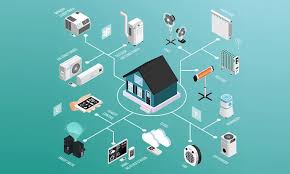Data visualization and dashboards play a crucial role in IoT data analytics by providing intuitive and interactive representations of the insights derived from IoT data. They enable users to understand complex patterns, trends, and anomalies in a visual format, facilitating data-driven decision-making and enhancing situational awareness. Here’s an overview of data visualization and dashboards for IoT applications:
- Visualizations for Sensor Data:
Visualizing sensor data is a common requirement in IoT applications. Line charts, scatter plots, heatmaps, and gauges are often used to represent sensor readings over time, spatial distributions, or relationships between different variables. These visualizations help users monitor sensor data, identify anomalies, and detect patterns or correlations. - Geospatial Visualization:
Geospatial visualization is essential when dealing with IoT applications that involve location-based data. Maps, heatmaps, and geospatial overlays can be used to visualize data such as vehicle tracking, environmental monitoring, asset tracking, or smart city applications. Geospatial visualizations provide insights into the spatial distribution of IoT data and enable users to identify geographic patterns or hotspots. - Real-time Dashboards:
Real-time dashboards provide a snapshot of the current state of an IoT system. They display key performance indicators (KPIs), alerts, and other relevant information in a concise and visually appealing manner. Real-time dashboards enable users to monitor the status of IoT devices, track metrics, and respond to critical events in real-time. - Historical Analysis Dashboards:
Historical analysis dashboards focus on analyzing and exploring historical IoT data. They allow users to visualize trends, patterns, and anomalies over a specific time period. Histograms, time-series plots, box plots, and other visualizations can be used to understand long-term performance, identify seasonal variations, and compare historical data across different dimensions. - Interactive Visualizations:
Interactive visualizations enable users to explore and interact with IoT data dynamically. Users can zoom in, filter, drill down, or select specific data points to gain deeper insights. Interactive visualizations can be implemented using features like tooltips, filtering controls, sliders, and interactive legends, enhancing the user experience and facilitating data exploration. - Customized Dashboards:
Customized dashboards allow users to tailor the visualizations and metrics to their specific needs. They can choose the relevant data sources, select key performance indicators, and arrange visualizations in a way that suits their preferences. Customized dashboards empower users to focus on the most critical information and customize the visualization layout according to their workflow. - Mobile-Friendly Dashboards:
With the increasing use of mobile devices, mobile-friendly dashboards are crucial for accessing IoT data on the go. Responsive design principles can be applied to ensure that dashboards adapt to different screen sizes and provide a seamless experience across desktops, tablets, and smartphones. - Predictive Analysis: Data visualization can incorporate predictive analytics models, offering visual representations of forecasted trends, predictions, or anomalies. This helps IoT operators or users make data-driven decisions based on future insights.
- Centralized Data Access: IoT dashboards provide a centralized interface to access and display data from multiple IoT devices or sensors, allowing for a holistic view of the IoT ecosystem. This simplifies data management and streamlines decision-making.
- Alerting and Notifications: Dashboards often support alerting and notification features to alert users about critical events or anomalies detected in IoT data. These notifications can be based on predefined thresholds or conditions, allowing for proactive monitoring and response.
- Integration with External Systems: IoT dashboards can integrate with other business applications or systems, enabling seamless data exchange and delivering a comprehensive view of IoT data within the broader business context.
- Improved Decision-Making: Data visualization and dashboards provide actionable insights and enable data-driven decision-making by making complex data understandable and readily available.
- Enhanced Collaboration: Data visualization and dashboards facilitate collaboration by enabling multiple stakeholders to access and interpret data simultaneously, fostering better communication and alignment.
- Improved Efficiency: Visual representations of data aid in identifying operational inefficiencies, optimizing resource allocations, and streamlining processes.
- Data Complexity: Managing and visualizing large volumes of IoT data, particularly heterogeneous and unstructured data, can present challenges in data processing, integration, and visualization.
- Data Security: Visualizing IoT data requires ensuring the security and privacy of sensitive information transmitted and displayed on dashboards.
When designing data visualizations and dashboards for IoT applications, it’s important to consider factors such as the target audience, the specific use case, the type and volume of data, and the desired level of interactivity. Choosing the right visualization techniques and dashboard features can significantly enhance the understanding, usability, and value of IoT data analytics.
